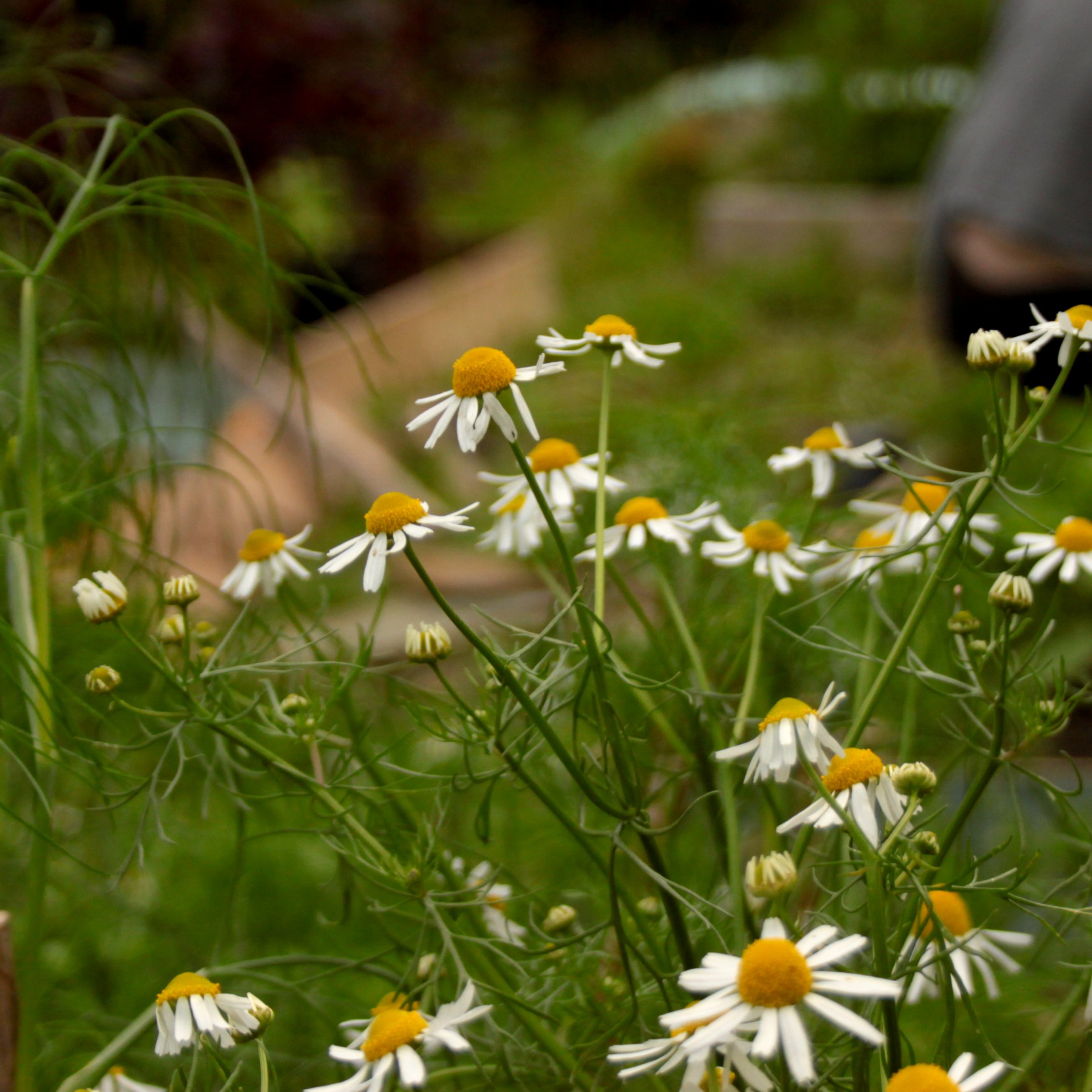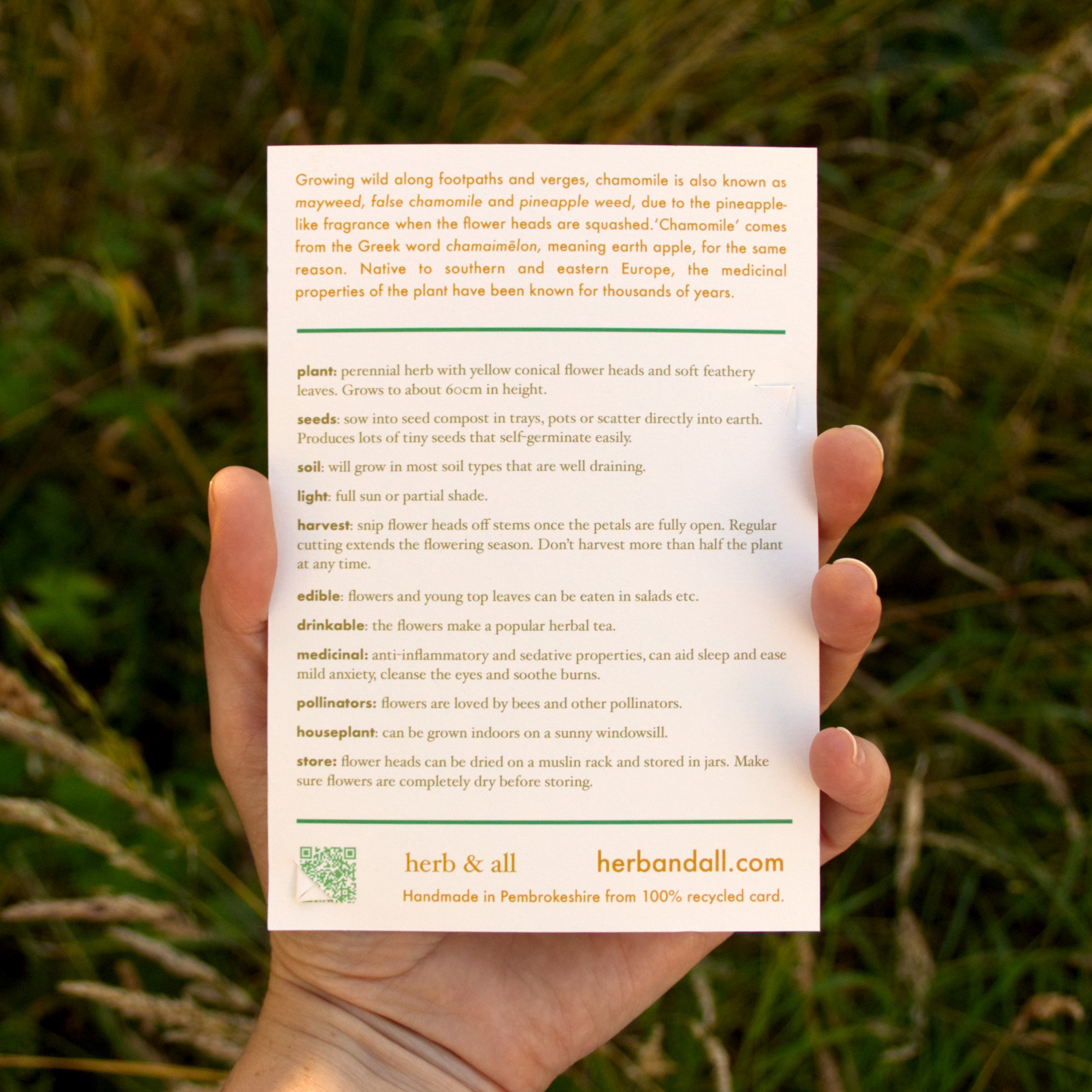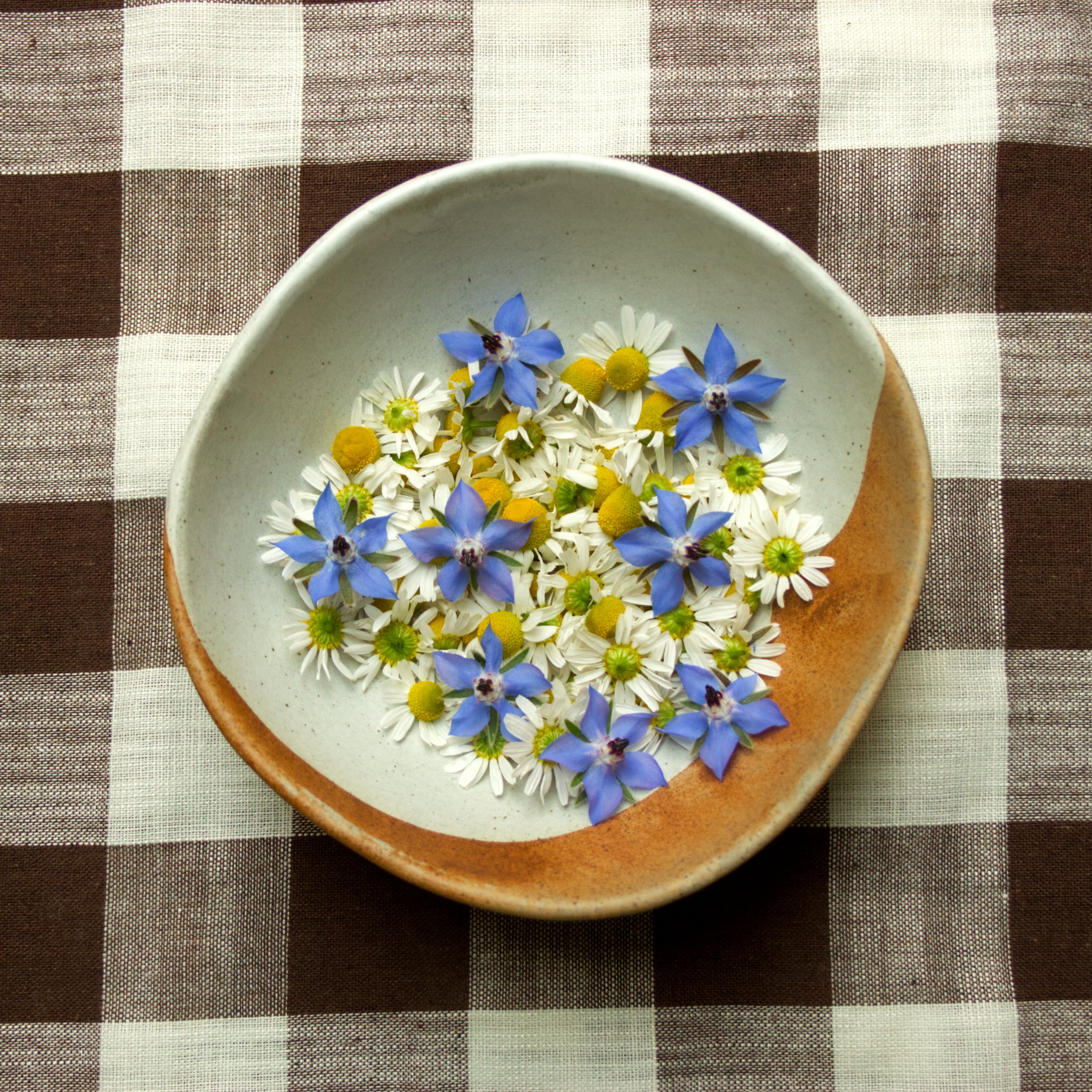camri: welsh chamomile seeds
Illustrated pack of chamomile seeds featuring Welsh plant name and folklore to sow, grow, eat, drink, heal, cleanse and enjoy.
Growing wild along footpaths and verges, chamomile is also known as mayweed, false chamomile and pineapple weed, due to the pineapple-like fragrance when the flower heads are squashed. ‘Chamomile’ comes from the Greek word chamaimēlon, meaning earth apple, for the same reason. Native to southern and eastern Europe, the medicinal properties of the plant have been known for thousands of years.
plant: perennial herb with yellow conical flower heads and soft feathery leaves. Grows to about 60cm in height.
seeds: sow into seed compost in trays, pots or scatter directly into earth. Produces lots of tiny seeds that self-germinate easily.
soil: will grow in most soil types that are well draining.
light: full sun or partial shade.
harvest: snip flower heads off stems once the petals are fully open. Regular cutting extends the flowering season. Don’t harvest more than half the plant at any time.
edible: flowers and young top leaves can be eaten in salads etc.
drinkable: the flowers make a popular herbal tea.
medicinal: anti-inflammatory and sedative properties, can aid sleep and ease mild anxiety, cleanse the eyes and soothe burns.
pollinators: flowers are loved by bees and other pollinators.
houseplant: can be grown indoors on a sunny windowsill.
store: flower heads can be dried on a muslin rack and stored in jars. Make sure flowers are completely dry before storing.
Approx 500 seeds, organically produced in Cornwall. Packaging designed and produced in Pembrokeshire, Wales, from 100% recycled content.
Illustrated pack of chamomile seeds featuring Welsh plant name and folklore to sow, grow, eat, drink, heal, cleanse and enjoy.
Growing wild along footpaths and verges, chamomile is also known as mayweed, false chamomile and pineapple weed, due to the pineapple-like fragrance when the flower heads are squashed. ‘Chamomile’ comes from the Greek word chamaimēlon, meaning earth apple, for the same reason. Native to southern and eastern Europe, the medicinal properties of the plant have been known for thousands of years.
plant: perennial herb with yellow conical flower heads and soft feathery leaves. Grows to about 60cm in height.
seeds: sow into seed compost in trays, pots or scatter directly into earth. Produces lots of tiny seeds that self-germinate easily.
soil: will grow in most soil types that are well draining.
light: full sun or partial shade.
harvest: snip flower heads off stems once the petals are fully open. Regular cutting extends the flowering season. Don’t harvest more than half the plant at any time.
edible: flowers and young top leaves can be eaten in salads etc.
drinkable: the flowers make a popular herbal tea.
medicinal: anti-inflammatory and sedative properties, can aid sleep and ease mild anxiety, cleanse the eyes and soothe burns.
pollinators: flowers are loved by bees and other pollinators.
houseplant: can be grown indoors on a sunny windowsill.
store: flower heads can be dried on a muslin rack and stored in jars. Make sure flowers are completely dry before storing.
Approx 500 seeds, organically produced in Cornwall. Packaging designed and produced in Pembrokeshire, Wales, from 100% recycled content.
Illustrated pack of chamomile seeds featuring Welsh plant name and folklore to sow, grow, eat, drink, heal, cleanse and enjoy.
Growing wild along footpaths and verges, chamomile is also known as mayweed, false chamomile and pineapple weed, due to the pineapple-like fragrance when the flower heads are squashed. ‘Chamomile’ comes from the Greek word chamaimēlon, meaning earth apple, for the same reason. Native to southern and eastern Europe, the medicinal properties of the plant have been known for thousands of years.
plant: perennial herb with yellow conical flower heads and soft feathery leaves. Grows to about 60cm in height.
seeds: sow into seed compost in trays, pots or scatter directly into earth. Produces lots of tiny seeds that self-germinate easily.
soil: will grow in most soil types that are well draining.
light: full sun or partial shade.
harvest: snip flower heads off stems once the petals are fully open. Regular cutting extends the flowering season. Don’t harvest more than half the plant at any time.
edible: flowers and young top leaves can be eaten in salads etc.
drinkable: the flowers make a popular herbal tea.
medicinal: anti-inflammatory and sedative properties, can aid sleep and ease mild anxiety, cleanse the eyes and soothe burns.
pollinators: flowers are loved by bees and other pollinators.
houseplant: can be grown indoors on a sunny windowsill.
store: flower heads can be dried on a muslin rack and stored in jars. Make sure flowers are completely dry before storing.
Approx 500 seeds, organically produced in Cornwall. Packaging designed and produced in Pembrokeshire, Wales, from 100% recycled content.





